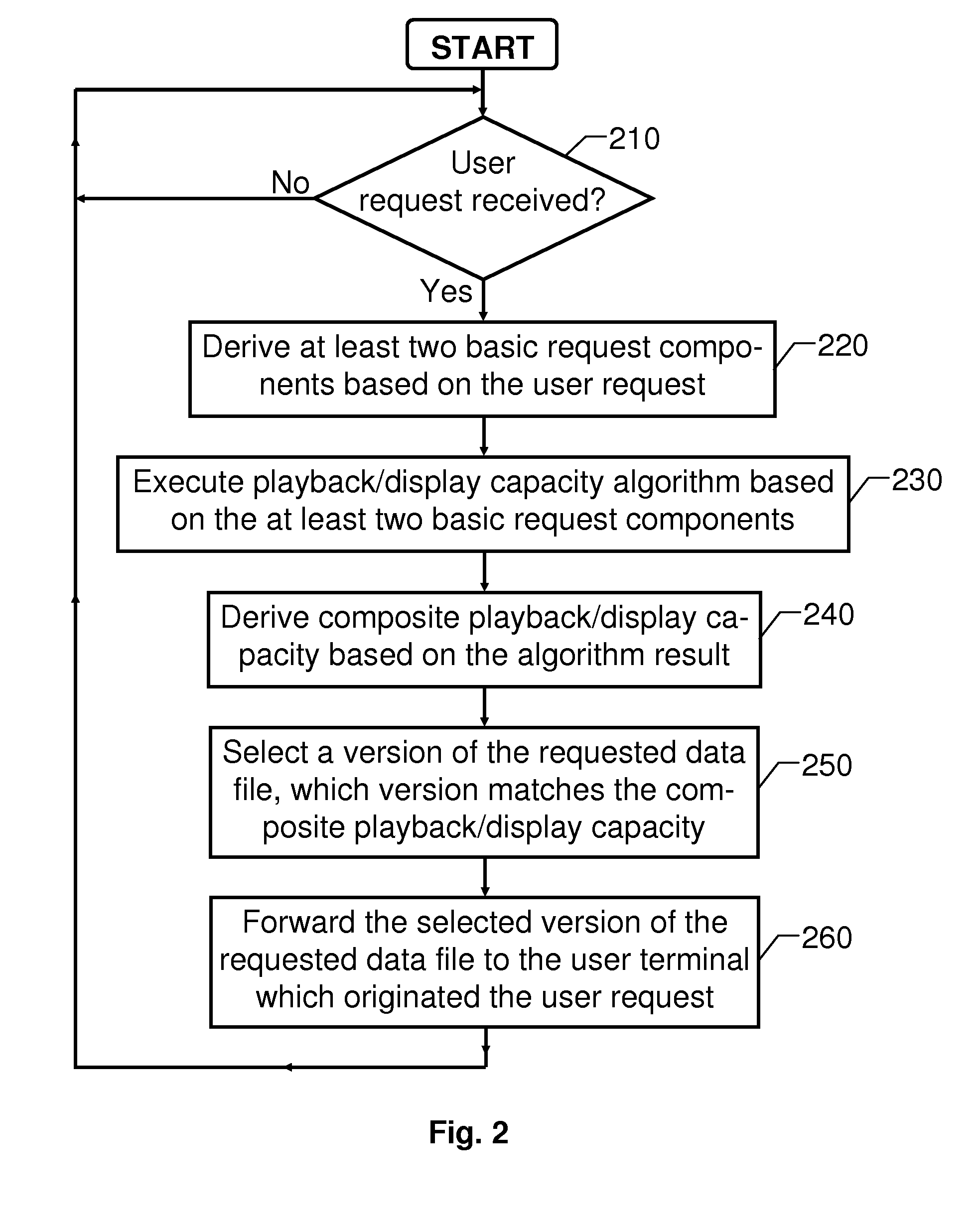User-request-initiated transmission of data files
a data file and user-request technology, applied in the field of data file distribution, can solve the problems of inconvenient and complex distribution of digital content, the capacity and capability of terminals, and the inability to distribute digital content via a resource such as a web page, and achieve the effect of reducing the difficulty of users and users, reducing the difficulty of distributing digital content, and improving the quality of data
- Summary
- Abstract
- Description
- Claims
- Application Information
AI Technical Summary
Benefits of technology
Problems solved by technology
Method used
Image
Examples
Embodiment Construction
[0026]We refer initially to FIG. 1, which shows a computer system. The system includes a computer node 100 connected to a network N. A number of user terminals T1 and T2 are also connected to the network N, however in this example, via a respective access network Nacc1 and Nacc2. Here, a first terminal T1 is represented by a mobile telephone and a second terminal T2 is represented by a laptop. However, according to the invention, the user terminals T1 and T2 may likewise be embodied in arbitrary type of equipment configured to exchange data over a wired or wireless network, e.g. a desktop computer, a palm top, a PDA (personal digital assistant) or a smartphone. Moreover, according to the invention, any number of intermediate networks between access network Nacc1 and Nacc2 and the network N is conceivable as long as the intermediate networks render it possible for the user terminals T1 and T2 to send user requests R there through to the node 100.
[0027]The node 100 is associated with ...
PUM
 Login to View More
Login to View More Abstract
Description
Claims
Application Information
 Login to View More
Login to View More - R&D
- Intellectual Property
- Life Sciences
- Materials
- Tech Scout
- Unparalleled Data Quality
- Higher Quality Content
- 60% Fewer Hallucinations
Browse by: Latest US Patents, China's latest patents, Technical Efficacy Thesaurus, Application Domain, Technology Topic, Popular Technical Reports.
© 2025 PatSnap. All rights reserved.Legal|Privacy policy|Modern Slavery Act Transparency Statement|Sitemap|About US| Contact US: help@patsnap.com



